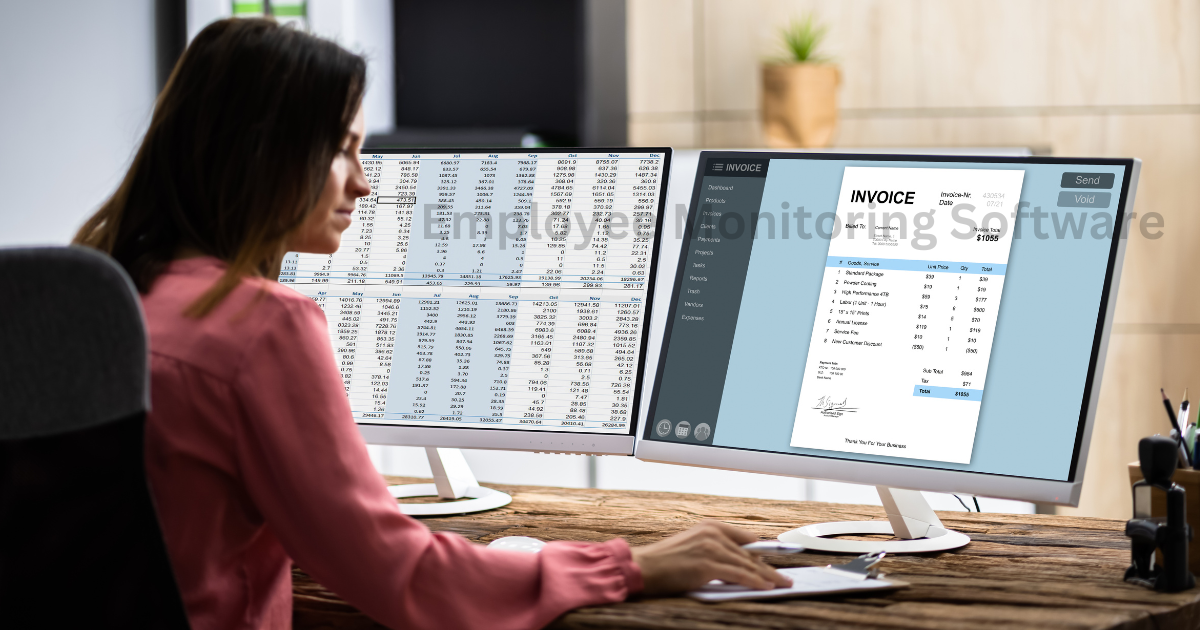In today’s fast-paced and increasingly remote work environment, businesses are seeking innovative ways to maintain productivity, ensure security, and comply with industry regulations. Employee Monitoring Software has emerged as a powerful tool to meet these demands. By tracking and analyzing employee activities, this software provides businesses with valuable insights that can lead to improved efficiency, better decision-making, and a more secure workplace. In this article, we will explore the key features, benefits, and best practices for implementing Employee Monitoring Software, as well as its role in shaping the future of work.
Employee Monitoring Software Overview
What is Employee Monitoring Software?
Employee Monitoring Software is a technological solution designed to monitor and manage employee activities within an organization. It collects data on various aspects of employee behavior, such as time spent on tasks, websites visited, and applications used. This data is then analyzed to provide insights that can help businesses optimize workflows, improve productivity, and ensure compliance with company policies and legal regulations.
Why is Employee Monitoring Software Important?
The significance of Employee Monitoring Software lies in its ability to enhance workplace efficiency and security. By providing real-time data on employee activities, it enables managers to identify bottlenecks, address inefficiencies, and make informed decisions. Additionally, the software helps ensure that employees adhere to company policies and maintain productivity, particularly in remote work environments where direct supervision is challenging. Overall, Employee Monitoring Software plays a crucial role in helping businesses stay competitive in today’s dynamic market.
Key Features of Employee Monitoring Software
**Time Tracking**
One of the most essential features of Employee Monitoring Software is time tracking. This feature allows businesses to monitor how much time employees spend on specific tasks or projects. By analyzing this data, managers can identify areas where time is being wasted and take steps to optimize workflows. Time tracking also helps in accurate project billing and ensures that employees are focusing on their assigned tasks.
**Screen Monitoring**
Screen monitoring provides managers with real-time visibility into employee activities by capturing screenshots or live video feeds of their computer screens. This feature is particularly useful for ensuring that employees are staying on task and not engaging in non-work-related activities during work hours. Screen monitoring can also be used to detect and prevent potential security breaches by identifying unauthorized access to sensitive information.
**Activity Logging**
Activity logging is another critical feature that records detailed information about employee behavior, such as websites visited, applications used, and files accessed. This data helps businesses identify patterns and trends in employee behavior, which can be used to improve productivity and security. For example, if an employee is frequently visiting non-work-related websites, this may indicate a lack of engagement or motivation that needs to be addressed.
**Reporting**
Comprehensive reporting capabilities are a key feature of Employee Monitoring Software, allowing businesses to generate detailed reports on employee activities. These reports can be customized to focus on specific metrics, such as time spent on tasks, productivity levels, or security incidents. By analyzing these reports, managers can gain valuable insights into employee performance and make data-driven decisions to improve efficiency and achieve business goals.
Benefits of Using Employee Monitoring Software
Increased Productivity
Employee Monitoring Software has been shown to significantly increase productivity by helping businesses identify inefficiencies and optimize workflows. By providing real-time data on employee activities, managers can quickly address any issues that may be hindering productivity, such as excessive time spent on non-work-related tasks or inefficient work processes. Additionally, the software encourages employees to stay focused on their tasks, knowing that their activities are being monitored.
Reduced Operational Costs
Another major benefit of Employee Monitoring Software is its ability to reduce operational costs. By identifying and eliminating inefficiencies, businesses can save time and resources, leading to lower overhead costs. For example, the software can help identify employees who are consistently underperforming, allowing managers to take corrective action or reassign tasks to more capable team members. This not only improves overall productivity but also reduces the need for additional staffing, ultimately lowering labor costs.
Enhanced Remote Work Management
With the rise of remote work, Employee Monitoring Software has become an essential tool for managing distributed teams. It provides managers with the visibility they need to ensure that remote employees are staying on task and meeting deadlines. The software also helps maintain accountability by tracking employee activities and providing detailed reports on their performance. This ensures that remote work does not lead to a decline in productivity, but rather, it supports a flexible and efficient work environment.
Compliance and Privacy Considerations
Addressing Privacy Concerns
While Employee Monitoring Software offers numerous benefits, it also raises concerns about employee privacy. It is crucial for businesses to implement these tools ethically and transparently to avoid damaging trust and morale. Employees should be informed about what data is being collected, how it will be used, and the measures in place to protect their privacy. By being upfront about monitoring practices, businesses can foster a culture of trust and accountability.
Legal Compliance
Compliance with data protection laws is another important consideration when implementing Employee Monitoring Software. Businesses must ensure that their monitoring practices comply with regulations such as the General Data Protection Regulation (GDPR) in Europe or the California Consumer Privacy Act (CCPA) in the United States. This involves obtaining employee consent, ensuring data is stored securely, and providing employees with access to their own data upon request. By adhering to these legal requirements, businesses can avoid potential legal issues and ensure that their monitoring practices are both ethical and lawful.
Ethical Use of Monitoring Tools
To use Employee Monitoring Software ethically, businesses should focus on achieving a balance between productivity and privacy. Monitoring should be conducted with the primary goal of improving business outcomes, not micromanaging employees. Clear policies should be established to define what is considered acceptable use of monitoring tools and to protect employees’ rights. By following ethical guidelines, businesses can use Employee Monitoring Software effectively while maintaining a positive work environment.
Use Cases in Various Industries
Remote Work Management
In industries where remote work is prevalent, Employee Monitoring Software has become indispensable for maintaining productivity and accountability. For example, in the tech industry, where many employees work from home, monitoring tools help ensure that software development projects stay on track and that team members are meeting their deadlines. The software provides managers with the data they need to manage remote teams effectively and to address any issues that arise promptly.
Project Tracking
Employee Monitoring Software is also widely used in project-based industries such as construction, marketing, and event planning. By tracking employee activities, managers can ensure that projects are progressing according to schedule and that all team members are contributing as expected. The software provides real-time insights into project performance, enabling managers to make adjustments as needed to keep projects on track and within budget.
time Optimization
In industries where time optimization is critical, such as customer service or sales, Employee Monitoring Software helps businesses ensure that employees are making the most of their work hours. For example, in a call center, monitoring tools can track how much time employees spend on calls, breaks, and administrative tasks. This data can be used to identify inefficiencies and to optimize schedules, ensuring that employees are spending the majority of their time on high-value tasks.
Choosing the Right Employee Monitoring Software
Scalability
When selecting Employee Monitoring Software, scalability is a crucial factor to consider. As a business grows, its monitoring needs will also evolve. It is important to choose software that can scale with the business, allowing it to monitor an increasing number of employees and activities without sacrificing performance. Scalable solutions ensure that businesses can continue to benefit from monitoring tools as they expand and take on more complex projects. This capability is vital when you need to effectively monitor a project as it evolves.
Integrations
Another essential consideration is the software’s ability to integrate with existing tools and systems. Businesses should choose Employee Monitoring Software that can seamlessly connect with their current project management, communication, and HR tools. This ensures that the software can be used to its full potential and that businesses can avoid the challenges associated with managing multiple, disconnected systems. When you need to monitor a project across various platforms, integration is key to maintaining efficiency and clarity.
User-Friendliness
User-friendliness is critical to the successful adoption of Employee Monitoring Software. If the software is difficult to use, employees and managers may be reluctant to embrace it, leading to low utilization and poor results. Businesses should look for software with an intuitive interface that is easy for employees at all levels to navigate. Training and support should also be provided to ensure that all users can effectively utilize the software’s features.
Best Practices for Implementation
Clear Communication
Successful implementation of Employee Monitoring Software begins with clear communication. Employees should be informed about the purpose of the software, how it will be used, and the benefits it will bring to both the business and themselves. By being transparent about monitoring practices, businesses can alleviate employee concerns and ensure that everyone is on board with the new system.
Training and Support
Providing adequate training and support is essential to the successful implementation of Employee Monitoring Software. Employees should be trained on how to use the software effectively, and ongoing support should be available to address any issues or questions that arise. This ensures that the software is used to its full potential and that employees are comfortable with the new tools.
Ongoing Monitoring and Adjustments
After the software is implemented, businesses should continue to monitor its effectiveness and make adjustments as needed. This may involve tweaking the settings, adding new features, or providing additional training to employees. By continually refining the use of Employee Monitoring Software, businesses can maximize its benefits and ensure that it continues to meet their evolving needs.
Trends and Future Outlook
Emerging Technologies
The landscape of Employee Monitoring Software is constantly evolving, with new technologies emerging to meet the changing needs of businesses. Artificial intelligence (AI) and machine learning (ML) are increasingly being integrated into monitoring tools, allowing for more sophisticated analysis of employee behavior and performance. These technologies can identify patterns and trends that may not be immediately apparent, helping businesses to make more informed decisions.
Future Evolution
As work environments continue to evolve, so too will Employee Monitoring Software. The rise of hybrid work models, where employees split their time between the office and remote locations, will drive the development of more flexible and adaptive monitoring tools.
Additionally, as concerns about privacy and data security grow, businesses will seek out software that offers enhanced protections and ensures compliance with ever-changing regulations.
Conclusion
Employee Monitoring Software has become an indispensable tool for businesses looking to enhance productivity, ensure security, and maintain compliance in today’s fast-paced work environment. By offering real-time insights into employee activities, these tools enable businesses to optimize workflows, reduce operational costs, and manage remote teams effectively. However, it is crucial to implement these tools ethically, with a focus on transparency and respect for employee privacy. As the landscape of work continues to evolve, Employee Monitoring Software will play an increasingly important role in helping businesses stay competitive and adaptable.









